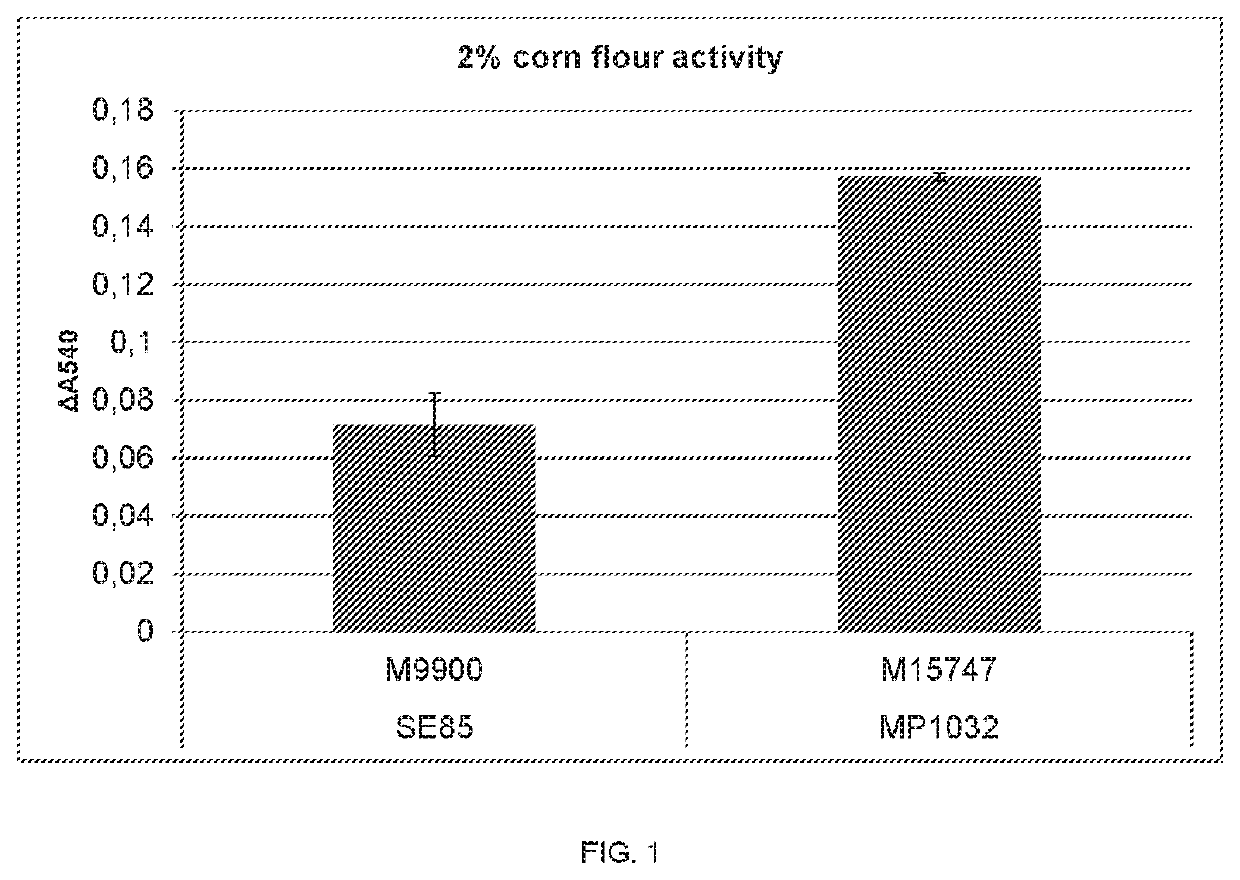Chimeric amylases comprising an heterologous starch binding domain
a technology of chimeric amylases and heterologous starch, which is applied in the field of chimeric amylases comprising a heterologous starch binding domain, can solve the problems ofcerevisiae /i>not being able to hydrolyze polysaccharides
- Summary
- Abstract
- Description
- Claims
- Application Information
AI Technical Summary
Benefits of technology
Problems solved by technology
Method used
Image
Examples
Embodiment Construction
[0019]The present disclosure relates to polypeptides having enhanced alpha-amylase activity for the starch saccharification process (for example for improving the hydrolysis of starch, including the hydrolysis of starch, including raw starch). In particular, the present disclosure relates to chimeric polypeptides having alpha-amylase activity comprising a moiety having alpha-amylase activity fused with a starch binding domain (SBD) moiety.
[0020]When the chimeric polypeptides having alpha-amylase activity are used in combination with or expressed from heterologous nucleic acid molecules in one or more recombinant host cell capable of fermenting glucose to a fermentation product, such as ethanol (such as, for example, in a recombinant yeast host cell), in combination with a glucoamylase, it allows for the break-down of starch to glucose, while simultaneously fermenting glucose to ethanol. Chimeric polypeptides having alpha-amylase activity can also be used in the absence of a glucoamy...
PUM
| Property | Measurement | Unit |
|---|---|---|
| temperature | aaaaa | aaaaa |
| temperature | aaaaa | aaaaa |
| temperatures | aaaaa | aaaaa |
Abstract
Description
Claims
Application Information
 Login to View More
Login to View More - R&D
- Intellectual Property
- Life Sciences
- Materials
- Tech Scout
- Unparalleled Data Quality
- Higher Quality Content
- 60% Fewer Hallucinations
Browse by: Latest US Patents, China's latest patents, Technical Efficacy Thesaurus, Application Domain, Technology Topic, Popular Technical Reports.
© 2025 PatSnap. All rights reserved.Legal|Privacy policy|Modern Slavery Act Transparency Statement|Sitemap|About US| Contact US: help@patsnap.com

